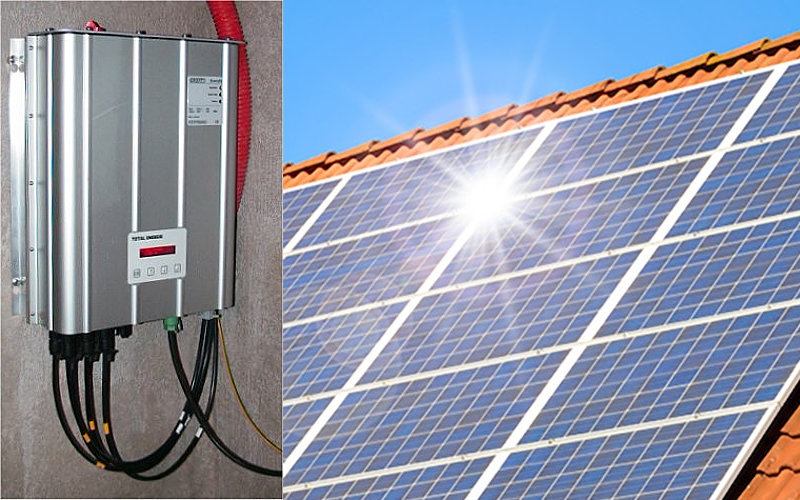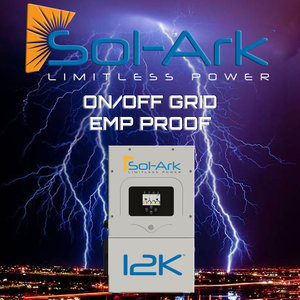Grid-Tied Solar Systems Don’t Work Well When The Grid Is Down
This may be a surprise. A typical grid tied solar system will not provide power for your home when the sun goes down, or, if and when the electric grid goes down.
I’ll bet that countless thousands discovered this recently when California’s power utility decided to shut down the electrical grid due to wind/fire danger hazards. Whoops… Most homes with a grid tied system lost their power too, even though they had solar panels on the roof!
However, read on for more information how to overcome this…
Grid-tied systems make up the vast majority of solar power system installations. As opposed to off-grid.
What is a Grid-Tied System?
In short, solar panels are tied (plugged) into the electrical grid through a grid-tied inverter.
A system called “net metering” will, in effect, roll your power meter backwards as excess energy from the panels feed into the grid.
When the home requires more energy than the solar panels can deliver, you draw electricity from the grid instead.
In essence you get credit from the power company as your grid-tied solar system dumps energy into the grid. But then that credit flips the other way when your energy demands exceed the panel’s output.
So what’s the problem with that? (you might ask)
The Problem With Grid-Tied Systems
There’s not a problem for most people, most of the time. Why? Because most people install this system with the expectation of saving some money over the long term. The net-metering billing system simply works behind the scenes and adjusts the monthly electric utility bill accordingly.
The Surprise
The problem arises when the electric grid goes down. Perhaps storm damage or some other reason. The homeowner discovers that there’s no power. Even though there’s lots of solar panels on a sunny day.
It’s a safety issue. Grid-tie inverters will switch out of the grid when the grid itself goes down. This is necessary for safety reasons so as not to injure a utility lineman with voltage back-feeding from your solar system into the grid while the grid itself is down.
Some Grid-Tied Inverters Have Courtesy Power
With that said, some grid-tie inverters may have an attached outlet providing “some” limited power for use while the grid is down. For example an extension cord could be plugged into it and power routed to a chest freezer or other appliance, etc.
Of course the sun would have to be shining for this to work.
Grid Tied AND Off-Grid Capability
The best of both worlds? A charger / inverter designed for both grid-tie and battery storage energy. Depending on your arrangement with your utility, you’ll get credit on the utility bill for energy fed into the grid, while also having energy storage capability for grid-down scenarios.
The problem with this is the expense. It costs lots more to do this. Because of the battery cost. However it is in an option. A battery bank. A better charger / inverter, interconnections and installation.
One of the best out there (in my opinion) is from Sol-Ark. You might check out their charger / inverter.
Off-Grid Circuits
This is not for everyone. But briefly, this is how I have my system installed…
I do have grid power to my home. I’ve also installed a stand-alone off-grid system which I use on various circuits within the home. I separate those circuits completely from the grid by way of transfer switches. Fortunately I have the knowledge and experience to have done this myself (saved installation money). But I’m just putting the notion out there for anyone’s interest.
The battery storage bank is always a very significant expense. If you plan on staying at your location for a significant period of time, the long term cost analysis is less painful. And in fact, it seems that today’s current Lithium battery technology provides reasonable cost over the life expectancy of the battery type.
The Takeaway
In summary, I just wanted to get an article out there which briefly describes the basic functionality of the very common grid-tied solar system. It works great when the sun is shining. But not so much on cloudy days, and not at all during the night. That’s when you still need the grid. Additionally, when the grid goes down, so will most grid-tied solar systems.
[ Read: 4 Essentials of Off-Grid Solar ]


